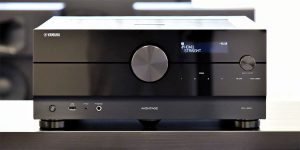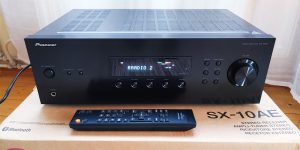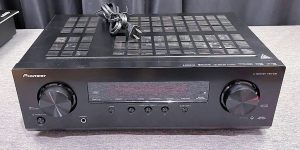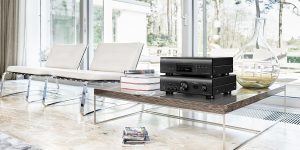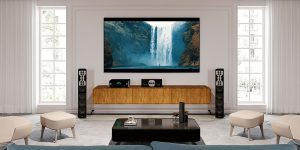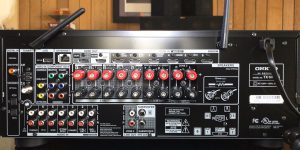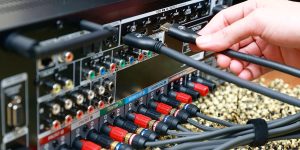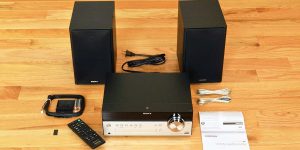When you’re looking for a new receiver to upgrade your home theater system, one of the key factors in choosing is your budget. Since the price range when choosing can be overwhelming, it’s important to understand that you can get a great device with basic features at an affordable price by compromising on some extras and the latest features. So in this article, I offer you a selection of the best receivers under $500 that are great representatives of their category and brand. As a result, you can own a home theater without going broke with your savings.
AV receiver under $500 comparison table
| Name | Channels | Power output | HDMI in/out | Bluetooth/Wi-Fi | Review |
|---|---|---|---|---|---|
| Sony STR-DH790 best overall | 7.2 | 145W/6 Ohm | 4/1 | yes/no | Review |
| Denon AVR-S660H also great | 5.2 | 75W/8 Ohm | 6/1 | yes/yes | Review |
| Yamaha RX-V4A | 5.2 | 80W/6 Ohm. | 4/1 | yes/yes | Review |
Best AV receiver under $500 reviews
Sony STR-DH790 – best overall
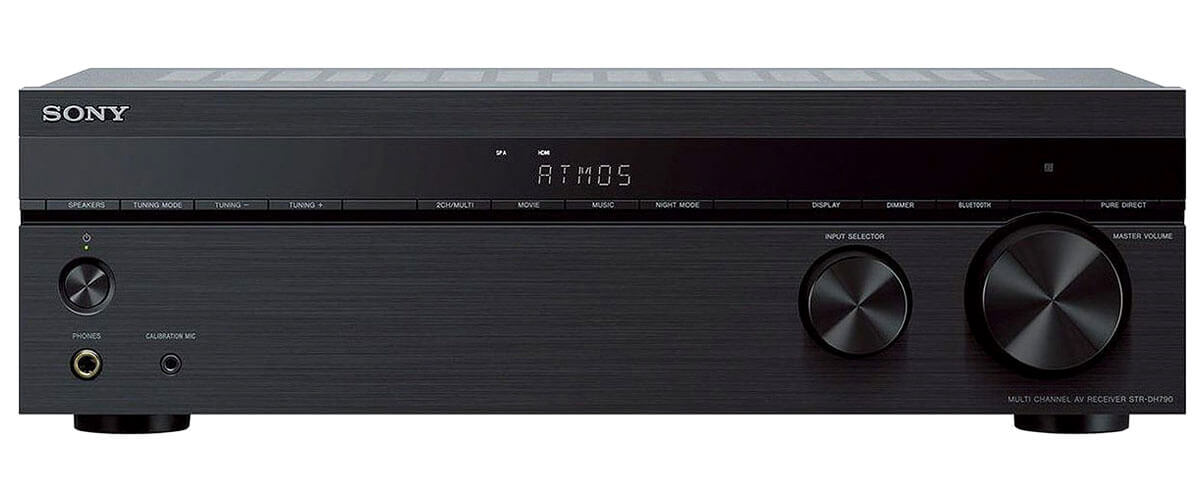
I want to open my rating by introducing you to the 2018 model from Sony. And that’s the Sony STR-DH790 with 145 watts (6 Ohms, 1kHz, THD 0.9%, 1ch), 7.2 channel capacity, and compatibility with speakers with impedance from 6 to 16 ohms. It’s easy to guess that with the 5.2.2 configuration, you can enjoy the benefits of Dolby Atmos and DTS:X surround sound formats. And the receiver’s sound is surprisingly good for its price point.
Nevertheless, compromises await you. The HDMI ports (HDCP 2.2, eARC) support 4K/60Hz resolution (minimum) for HDR10, HLG, and Dolby Vision formats. These are not the most advanced video options on my list, but I will not call it a disadvantage either since, in budget devices, I am still primarily interested in sound. And in this sense, Sony did their job. For example, they organized channels, allowing bi-amping for two front speakers. This greatly improves the quality of soundtrack separation. And Bluetooth supports the AAC codec, which allows you to work with Apple equipment without losing quality. There is also the Pure Direct feature, which suppresses noise. In general, the manufacturer has focused on sound.
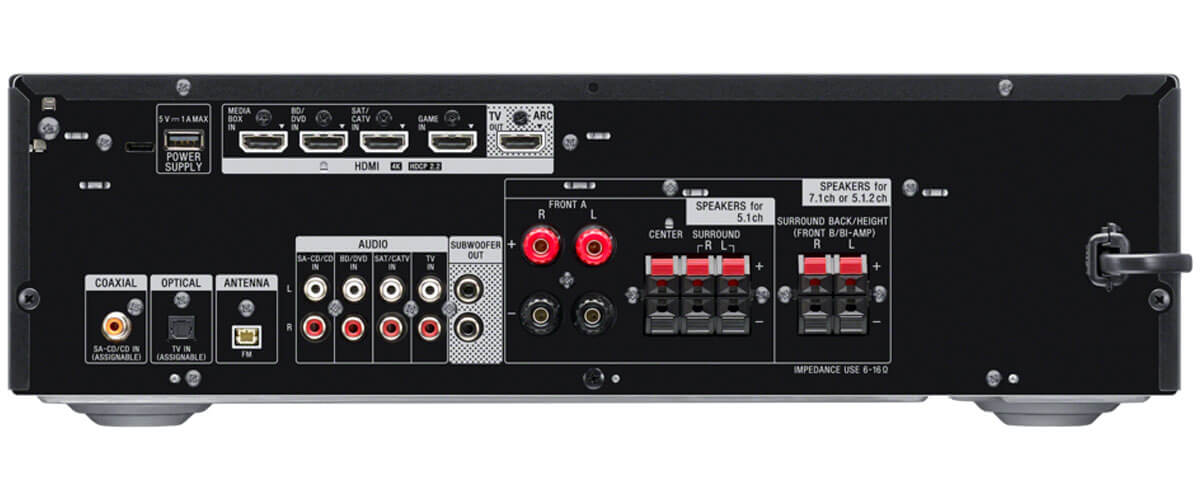
And indeed, the Sony STR-DH790 is beautiful in Dolby Atmos. I’ve tried Netflix, Blue Ray (even better), and sports content and have been pleased with the quality. However, we are mindful that it will only be good for a small room (mine is about 130 ft2). The microphone auto-calibration feature is worth noting: it was unrealistically easy and straightforward, and everything was adjusted in 5 minutes.
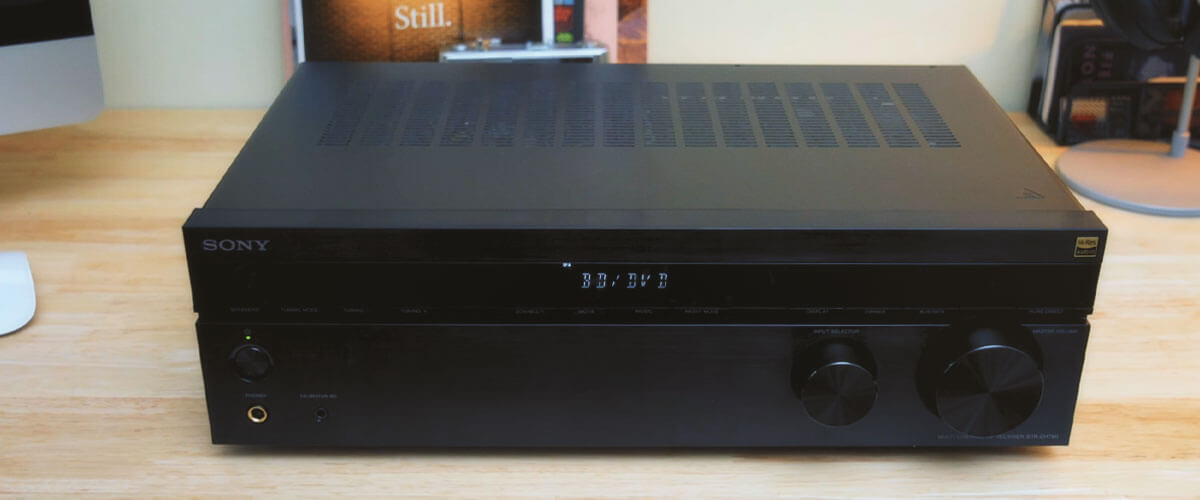
However, the receiver overheated during operation, and significantly, even though it was in an open space. Judging by the reviews, I understand this is a frequent “disease” of this model. Just don’t overload it and provide extra cooling. What really disappoints me is some nightmarish user menu. It looks like the STR-DH790 came to us in the ’80s! Unacceptable simplicity for the 21st century. In addition, it is stingy. For example, you can’t adjust the settings for HDMI and audio modes. But this aspect relates to usability, not the receiver’s performance, so it is not so critical.
The Sony STR-DH790 gets the title of best AV receiver under $500 on my list for its combination of excellent immersive sound, maximum channel capacity (for its category), availability of basic features, and quite acceptable compromises. It is an excellent “golden mean” of its price/performance combination category. An excellent replacement for outdated equipment.
Key specs
- Channels: 7.2.
- Power output: 145W/6 Ohm.
- HDMI inputs/outputs: 4/1.
- Video functions: 4K/60Hz pass-though.
- Bluetooth/Wi-Fi: yes/no.
- Streaming services: has not.
- Supports: HDMI ARC, HDMI eARC, HDMI CEC, HDCP2.3, HDR10, Dolby Vision.
- Surround sound: DTS-HD Master Audio, DTS:X, Dolby Atmos, Dolby TrueHD.
Pros
- Bluetooth with AAC codec allows you to work with Apple products without losing quality.
- The Pure Direct function does a good job of suppressing noise on the front channels.
- Incredibly easy auto-calibration, got the job done in 5 minutes.
Cons
- Overheats with the prolonged operation. It will need additional cooling.
- Stingy and primitive user menu with limited setup options.
Denon AVR-S660H – also great
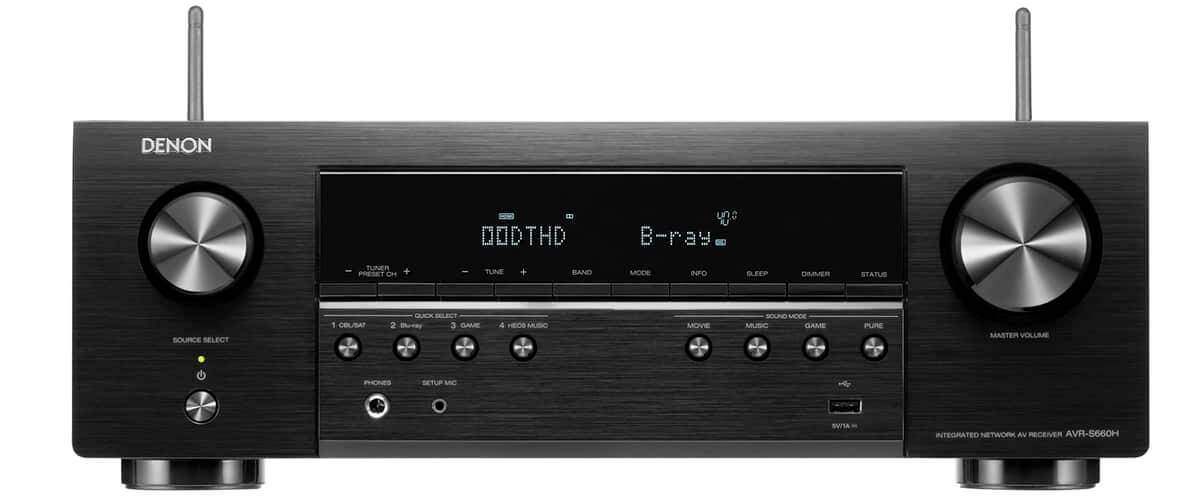
The following model will be a prime example of compromises in every model of my selection. And the variations are very different. For example, the Denon AVR-S660H has 5.2 channels, which means the Dolby Atmos upper channels are not available to you, and the power of this model is 75W (8 Ohm, 20Hz – 20kHz, 0.08%, 2ch), but it costs more than the STR-DH790. So what are the advantages of Denon?
This receiver has more input ports than any other model in my selection of HDMI ports (6/1 with HDCP2.3 and eARC support). This means you can connect more devices and get access to content with better resolution than Sony’s at 4K/120Hz and even 8K/60Hz. That’s cool, right? Those are the highest possible resolutions today. Video formats are also better: Dolby Vision, HDR 10+, Dynamic HDR, and HLG. The AVR-S660H is also compatible with Android and iOS, supports streaming services and AirPlay 2 (including the most advanced Roon Tested), has Wi-Fi (Sony does not), and even a built-in HEOS system for wireless audio broadcasting in other areas. So, the conclusion is simple – the manufacturer has made a bias towards functionality.
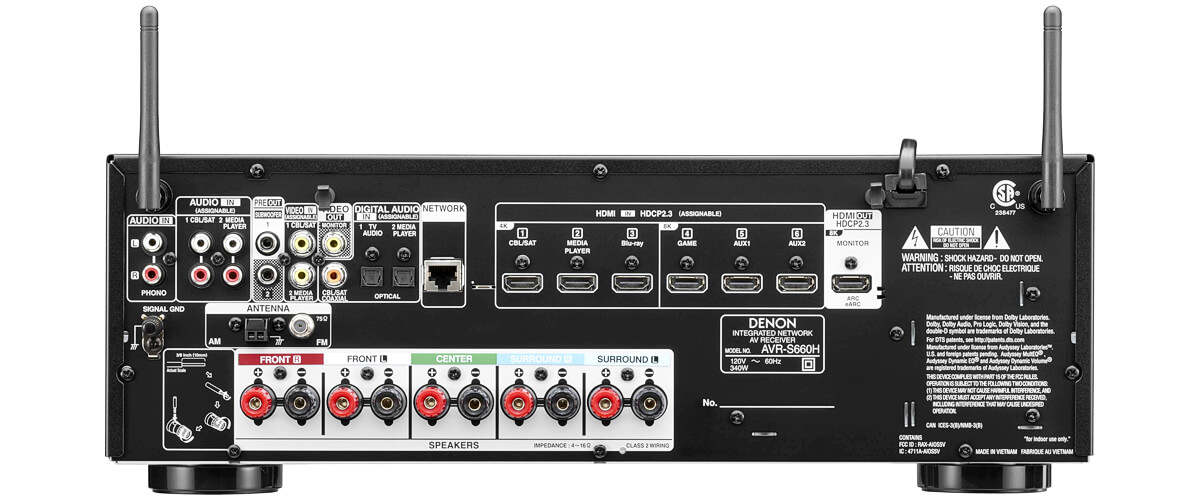
You can (and should) control the system from your phone. Installing the Denon app gives me access to volume control from my iPhone. Sure, you can use the remote, but it’s much easier with the app. However, combining the Denon and HEOS apps becomes much slower and requires constant rebooting. Nevertheless, it’s worth getting used to. I also didn’t really like the way the eARC worked. I had to reboot the receiver to hear the sound when changing inputs. But maybe it’s a compatibility issue with my TV.
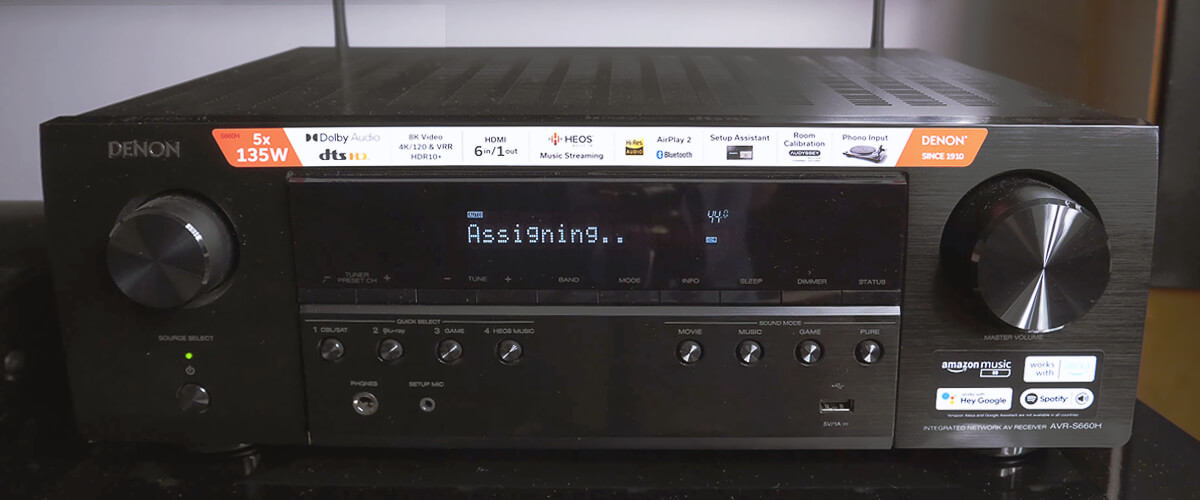
But overall, Denon holds the brand in the area of sound. The famous warm sound and excellent signal transfer made my system sound different from other devices. I noted a noticeable improvement in soundstage overall, quality channel separation, and high dialogue detail compared to other models in this category (except the Yamaha). In addition, I tried out the compressed sound enhancer feature. As a result, my old MP3 recordings (128 kbps) sounded very realistic. It made them regain their original look!
The Denon AVR-S660H 2021 is the best AVR under $500 regarding functionality and connectivity. You get a state-of-the-art device that will serve you for years, giving you warm sound quality, high-quality video, wireless control, and multiroom audio HEOS.
Key specs
- Channels: 5.2.
- Power output: 75W/8 Ohm.
- HDMI inputs/outputs: 6/1.
- Video functions: 8K/60Hz, 4K/120Hz pass-though, upscaling up to 8K.
- Bluetooth/Wi-Fi: yes/yes.
- Streaming services: AirPlay 2, Spotify, TuneIn, Deezer, Tidal, Netflix, Amazon Prime.
- Supports: HDMI ARC, HDMI eARC, HDMI CEC, HDCP2.3, HDR10+, Dolby Vision.
- Surround sound: DTS HD Master, DTS:X, DTS Virtual:X, Dolby Atmos, Dolby TrueHD.
Pros
- More HDMI ports than any other model in my selection.
- The Denon app makes it much easier to control from your smartphone.
- The compressed audio enhancer feature made recordings sound authentic and high quality.
Cons
- Using the Denon app and the HEOS makes the controls much slower.
Yamaha RX-V4A
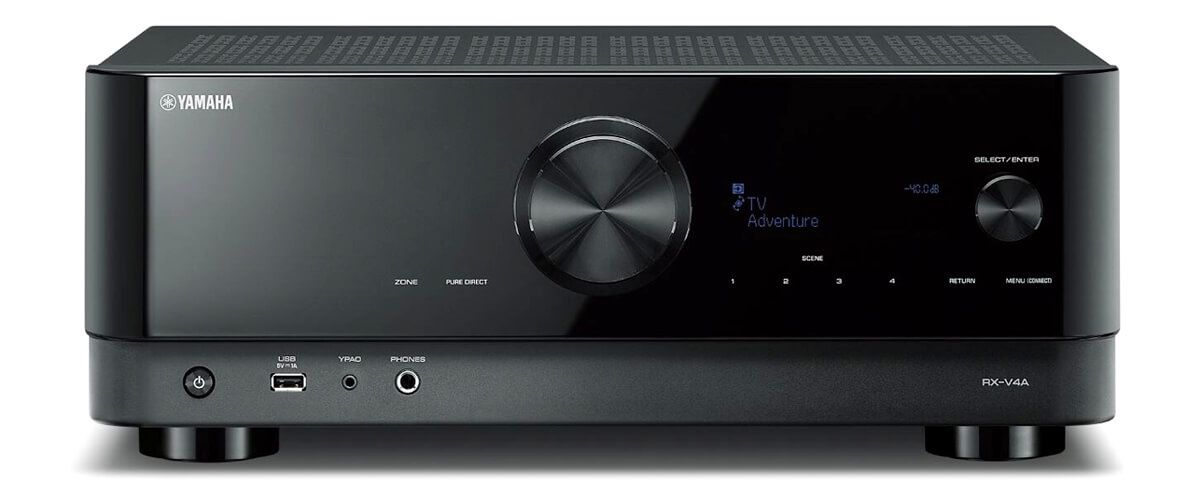
Yamaha RX-V4A was released in 2020, and its creators also focused on functionality, video quality, and advanced features. Therefore, this model resembles the Denon AVR-S660H in many ways.
The claimed power is 80 watts (6 Ohm, 20Hz-20kHz, 0.09% THD, 2ch), and the 5.2 configuration allows for surround sound content of aging formats. Still, this receiver can offer some advanced options relative to the Denon, although in some respects inferior. As you can see, there are AVRs for all tastes and colors picked out here. And to be honest, I’m not at all thrilled with the dim LCD. On it, you can not see the information well, even at close range.
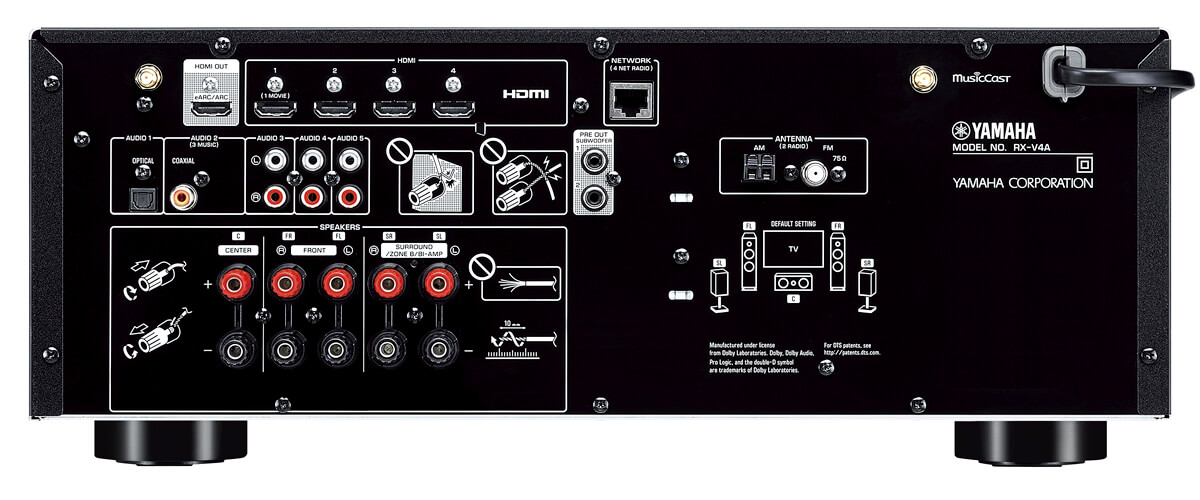
As for the video, the RX-V4A’s capabilities are identical to Denon’s, although Yamaha is inferior to the latter in the number of HDMI ports (4/1). In terms of wireless connectivity and use of streaming services, everything is also identical, except for the use of the MusicCast wireless streaming system to other areas, as well as access to voice control (Google Assistant and Amazon Alexa), which the other models in my rating do not have. The Yamaha also, like the Denon, can enhance MP3 files.
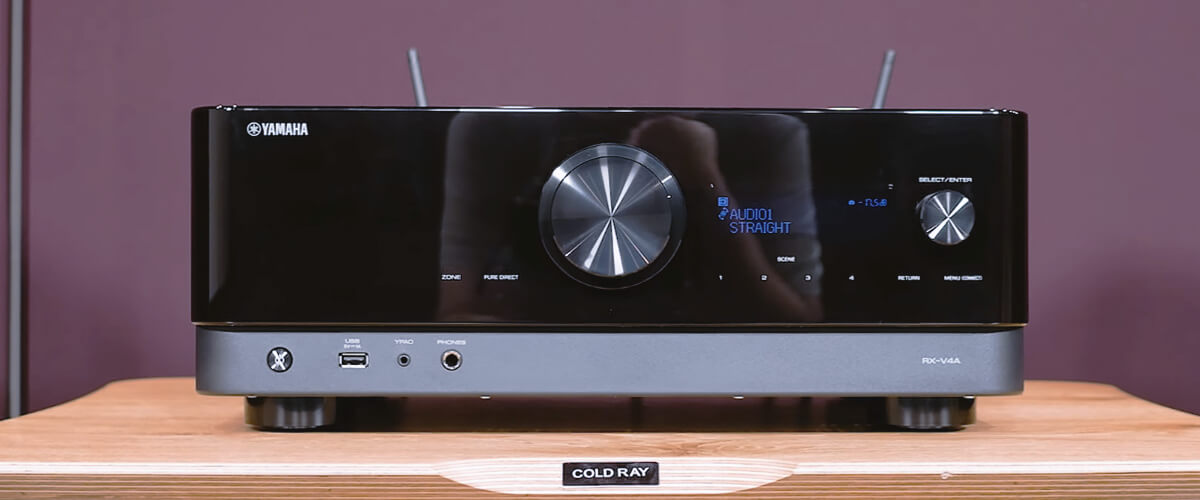
Regarding the sound of the system with the Yamaha receiver, I would note the following points:
- The AVR works great with 4 Ohm speakers, even though it is stated that the minimum impedance is 6 Ohm. Have no fear; I’ve tested and confirmed it’s a great combination.
- The RX-V4A has an excellent bass response. As a result, I noticed a much clearer sound in both movies and music.
- You can adjust each speaker’s volume individually, optimizing the soundstage as much as possible.
And the only frank disadvantage I noticed with some apps on the TV was the sound disappearing for a few seconds. I can’t say what it depends on because I didn’t notice a pattern, repetition of intervals, or other things that could point me to a particular flaw.
Overall, the Yamaha RX-V4A is an excellent AV receiver in the under $500 category. It offers clear, crisp sound with deep bass when watching movies or listening to music, offers multiple features, and would make a great foundation for a modern user’s home system.
Key specs
- Channels: 5.2.
- Power output: 80W/6 Ohm.
- HDMI inputs/outputs: 4/1.
- Video functions: 8K/60Hz, 4K/120Hz pass-though, upscaling up to 4K.
- Bluetooth/Wi-Fi: yes/yes.
- Streaming services: AirPlay 2, Spotify, TuneIn, Deezer, Tidal, Netflix, Amazon Prime.
- Supports: HDMI ARC, HDMI eARC, HDMI CEC, HDCP2.3, HDR10+, Dolby Vision.
- Surround sound: DTS HD Master, Dolby Atmos, Dolby TrueHD, Dolby Digital Plus.
Pros
- Unlike many receivers, it works well with 4 Ohm loudspeakers.
- It has an excellent bass response in movies and music.
- You can adjust the volume of each speaker individually.
Cons
- Dull, poorly readable LCD with poor viewing even at close range.
- In some TV applications, the sound disappears for a few seconds.
Onkyo TX-SR494
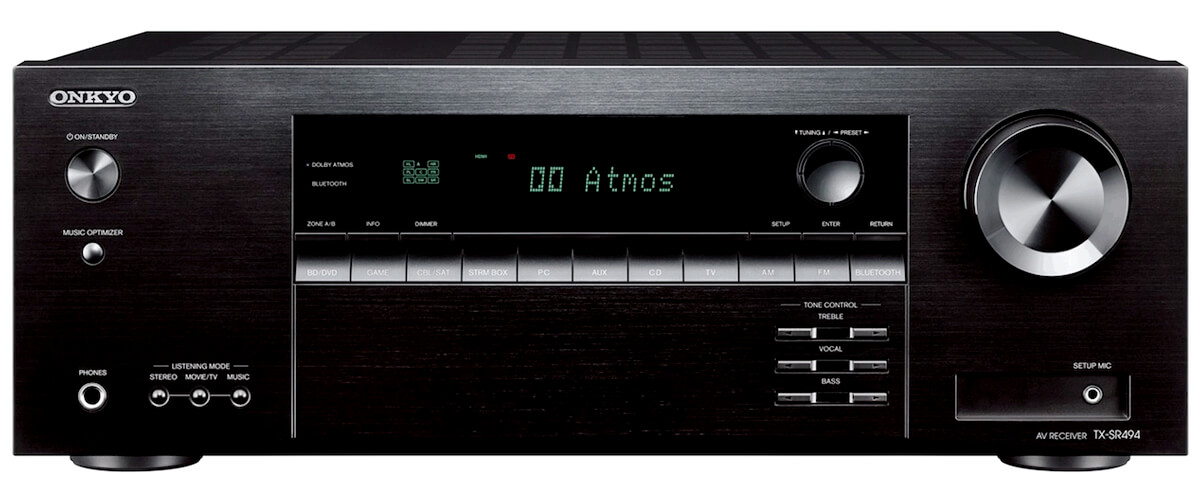
Well, we’re back to the 7.2 configurations, and I’m ready to introduce you to the Onkyo TX-SR494 home theater receiver released in 2019. A quick look at the receiver’s features brings us back to the leader of my list, the Sony STR-DH790, with which Onkyo is quite similar.
Regarding video capabilities, the Onkyo is just as good as the Sony, so I won’t dwell on them. The only thing worth noting is that to get 4K content, you need a cable that supports 4K; with regular HDMI cables, the video transfer will fail.
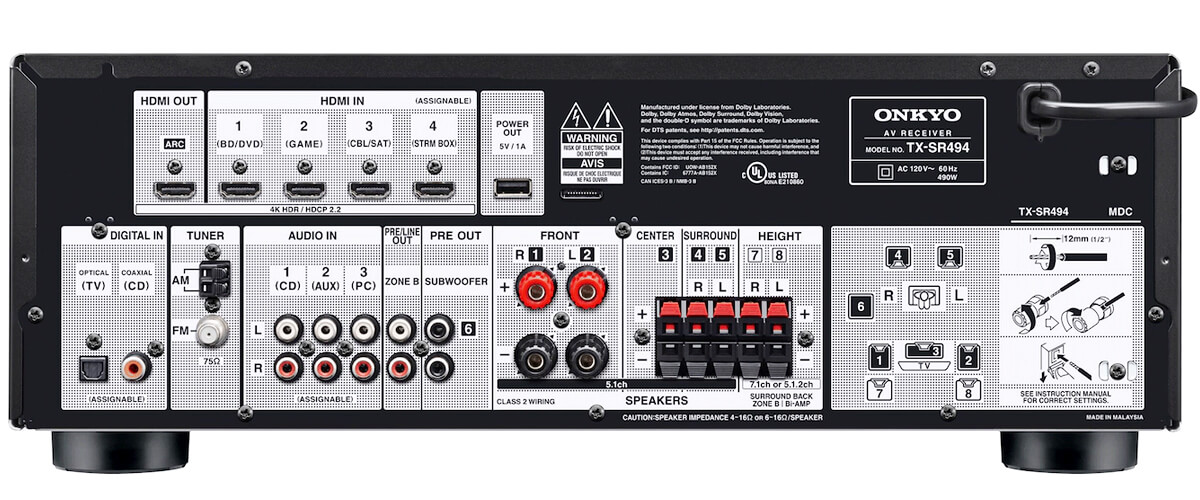
With 80W power (8 Ohms, 20-20kHz, 0.08%, 2ch), this model provides excellent Dolby Atmos and DTS:X surround sound formats. Still, unlike Sony, you do not have to make holes in the ceiling because TX-SR494 works with Dolby Atmos (Height Virtualizer) and DTS (Virtual:X) virtual height channels. This sets it apart from the more expensive models on my list. All in all, it is worth noting that the receiver’s sound is surprisingly very high quality. Better than many models in the same price category. Although AccurEQ auto-calibration does not do its job well (after using it, I got a pretty flat sound), the manual settings for treble and bass can achieve great results. However, I had to work hard and spend quite a lot of time. But I especially like the voice adjustment feature. Excellent dialogue detail is available in all content, which makes me thrilled.
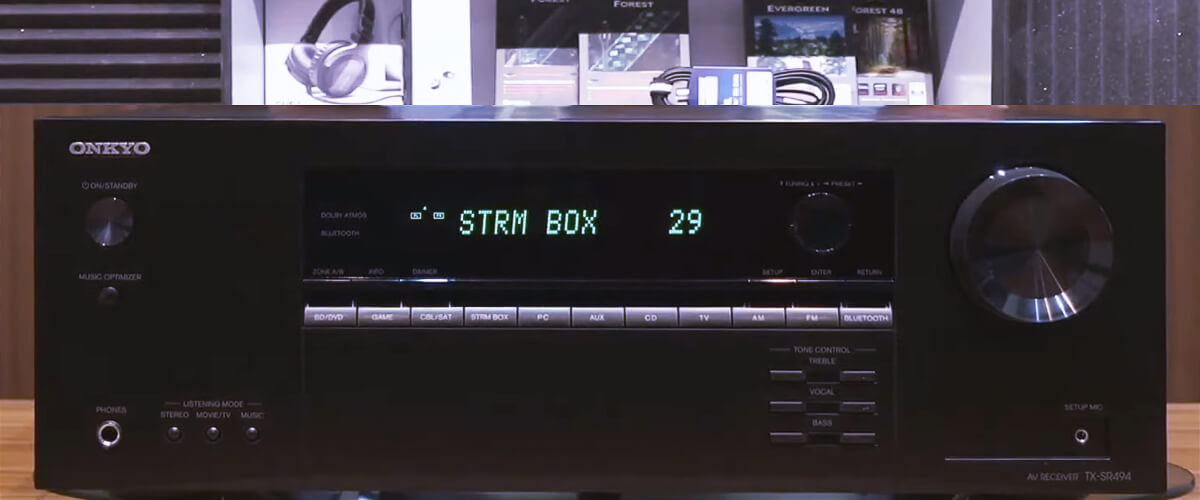
Disappointment awaits those who expect to use streaming services. Aside from the fact that it doesn’t have any of them built in, Bluetooth won’t help you either. When the signal is amplified, the speakers produce noise incompatible with listening to music.
The Onkyo TX-SR494 is a great 4K receiver for fans of family movie nights. However, it will not be useful for those who want to use the receiver for content from streaming services. I consider it an acceptable compromise if you prefer specifically watching movies with Dolby Atmos and DTS:X surround sound formats.
Key specs
- Channels: 7.2.
- Power output: 80W/8 Ohm.
- HDMI inputs/outputs: 4/1.
- Video functions: 4K/60Hz pass-though, upscaling up to 4K.
- Bluetooth/Wi-Fi: yes/yes.
- Streaming services: AirPlay 2, Spotify, TuneIn, Deezer, Tidal, Netflix, Amazon Prime.
- Supports: HDMI ARC, HDMI eARC, HDMI CEC, HDCP2.3, HDR10+, Dolby Vision.
- Surround sound: DTS HD Master, DTS:X, DTS Virtual:X, DTS Neural:X upmixing, Dolby Atmos, Dolby TrueHD, Dolby Atmos Height Virtualizer.
Pros
- Unlike the more expensive models on my list, it works with Dolby Atmos Height Virtualizer and DTS Virtual:X.
- Loved the voice adjustment feature, with which you can hear the dialogue in any movie.
Cons
- Unlike the Sony STR-DH790, the auto-calibration produces a dull sound, and you have to mess around with the manual one.
- Bluetooth does not cope with the transfer of content from streaming services.
Pioneer VSX-834
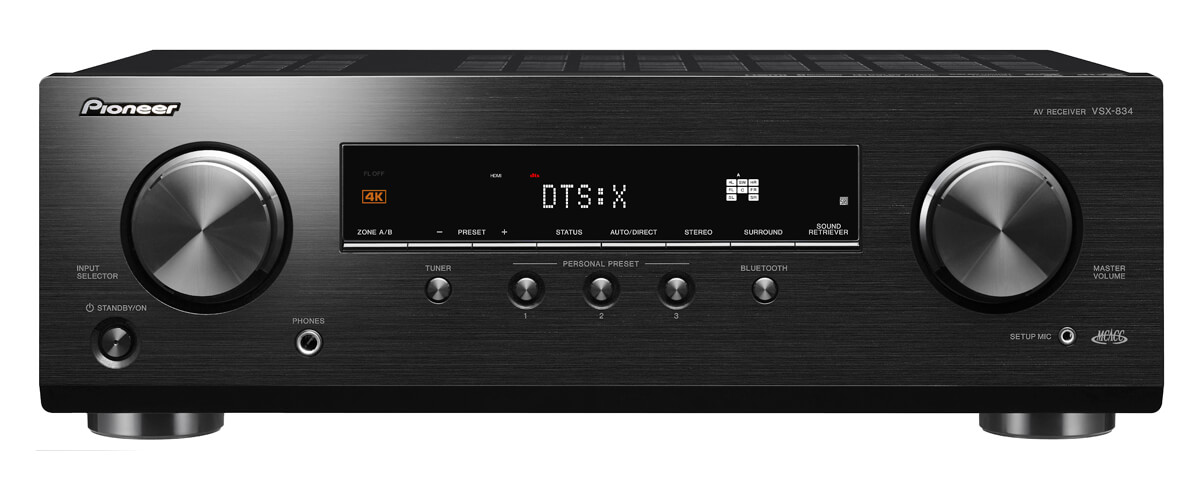
And the last receiver in my rating with 7.2 channels is the mega-universal Pioneer Elite VSX-LX104. Looking at the specs of this 2019 model, you might wonder why we even looked at the previous four since it has everything you could want (more than Onkyo and Sony). But let’s be honest; you can’t get everything by paying so little.
So, the video capabilities, support for surround sound formats (including Dolby Atmos and DTS virtualization), and even power (80 W) are identical to the Onkyo TX-SR494. But you also get access to Apple AirPlay 2 and all kinds of streaming services; the receiver is Sonos compatible and even has more HDMI ports (like the Denon AVR-S660H), but it all works relatively. I can’t even highlight the outright advantages and disadvantages of this device, but I will try. For example, the manufacturer has saved much money on components by chasing functionality. Instead of connecting the speakers with banana plugs, we have spring connectors, which is not uncommon for budget AVRs. And one broke in the first minutes of trying to connect the speakers.
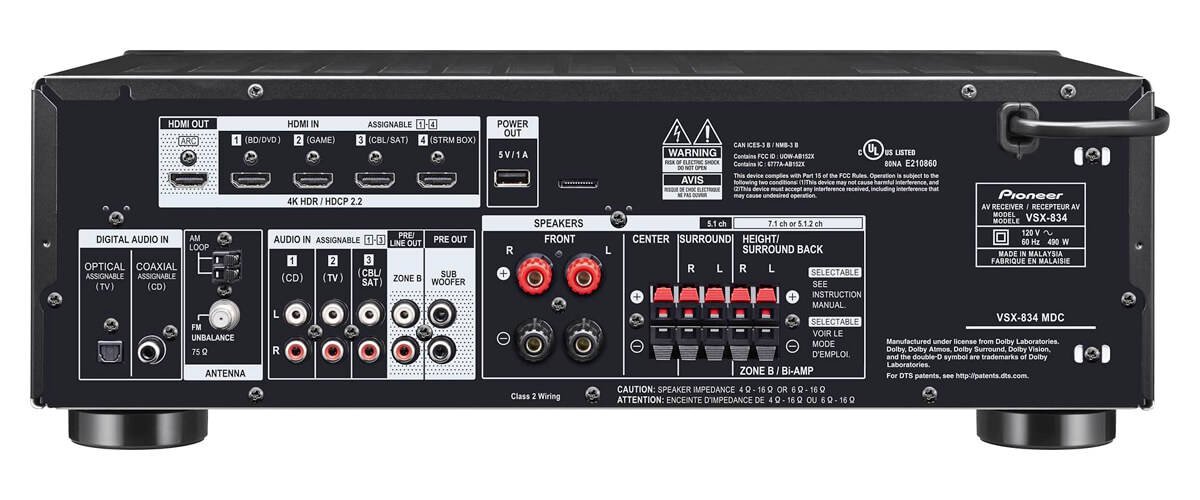
Nevertheless, Pioneer has been in the audio market for a long time, and you can feel it in the AVR’s calibration, setup, installation, and sound. Everything is averagely good, with no outright mistakes or caveats on my part. But the overall impression of the soundstage loses for me compared to the Onkyo or Sony. But credit must be given to the clarity of sound and the good power of the receiver. So I wouldn’t classify this as a disadvantage of the VSX-LX104, especially considering the extensive features. Also, Pioneer has no paper manual. That’s probably good for the environment, but it’s extremely inconvenient when setting up the system. But autocalibration MCACC Setup MIC pleased me because it coped with the task very well, quickly found the speakers, measured the distance, and distributed the sound without requiring additional settings.
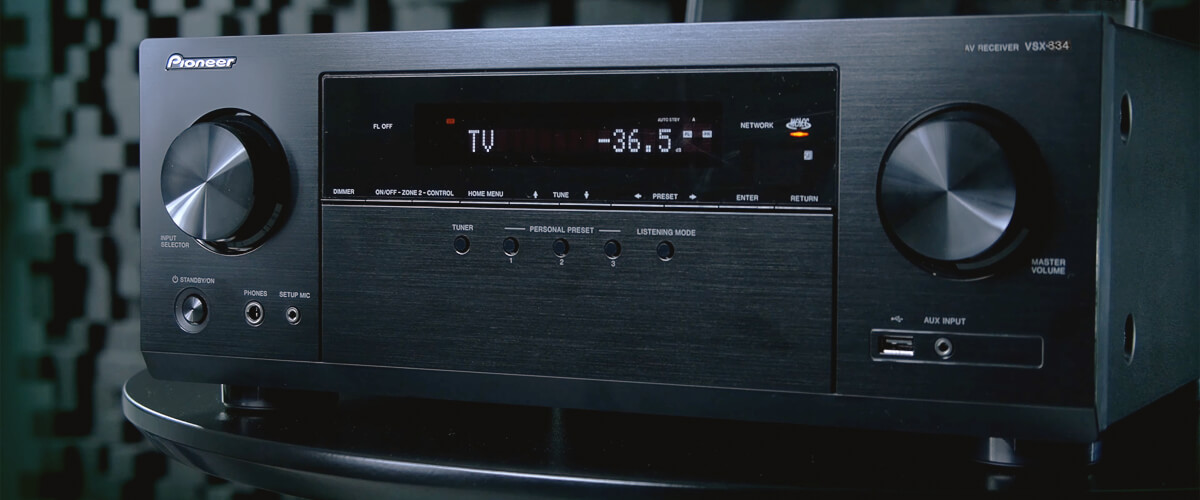
The Pioneer Elite VSX-LX104 is a versatile device for those looking for an all-in-one device and wanting to pay less. A worthy surround sound receiver under $500 for your home theater that can deliver quality, powerful sound with acceptable compromises.
Key specs
- Channels: 5.2.
- Power output: 80W/6 Ohm.
- HDMI inputs/outputs: 4/1.
- Video functions: 4K/60Hz pass-though.
- Bluetooth/Wi-Fi: yes/no.
- Streaming services: has not.
- Supports: HDMI ARC, HDMI CEC, HDCP2.3, HDR10, Dolby Vision.
- Surround sound: DTS HD Master, DTS:X, DTS Neural:X, Dolby Atmos, DTS Virtual:X, Dolby TrueHD, Dolby Digital Plus.
Pros
- The greatest functionality compared to other budget 7.2 receiver models on my list, like Onkyo TX-SR494 and Sony STR-DH790.
- MCACC Setup MIC handled the calibration quickly without requiring additional adjustments.
Cons
- Some components are of low quality (e.g., the spring connector).
- No paper user manual is included.
Key features to look for in an AV receiver under $500
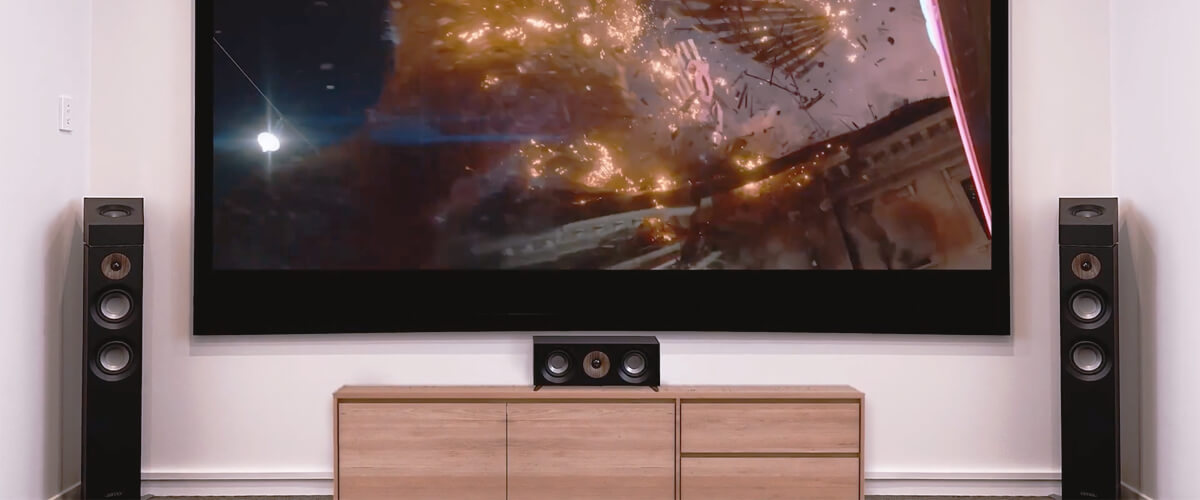
Before choosing a receiver, you should consider your needs in detail. That’s why I want to tell you what AVRs in the under $500 category have to offer. By focusing on the key factors, it will be easier for you to determine the finest option:
Number of channels and surround sound formats
So, we are looking at the category of budget receivers, so you should not expect a device that will offer you more than 5 or 7 channels among them. And it would help if you understood the difference. The 5.1-5.2 configuration is the minimum in the world of surround sound and can give you a sense of presence when watching movies or shows. It’s a great entry-level option for those not fans of height channels. However, for those who want to hear the helicopter flying over the screen as if it were flying right above you, consider the 7-channel receivers. They give you immersive Dolby Atmos and DTS:X formats.
Power output
The power receivers offer in the under-$500 category is typically 50-80W per channel. This power is enough to smoothly fill a room up to 300 feet square with sound. So don’t install the system in larger rooms; the sound will dissipate and get lost. With budget AVRs, you won’t use full volume anyway because you can usually hear defects and grind at them. The main thing is that your speakers should be compatible with the receiver (have the same power rating and frequency range).
Connectivity
Examine all the equipment you want to add to your home theater. Most modern equipment has HDMI inputs, so make sure the receiver ports are equipped with HDCP 2.3, CEC, ARC, and eARC. Also important is whether you can use them to watch HDR10 and Dolby Vision videos at 4K/60Hz, 4K/120Hz, or even 8K. Older equipment needs coaxial, component, and optical connectors. And wireless capabilities will give you access to streaming services.
We are supported by our audience. When you purchase through links on our site, we may earn an affiliate commission at no extra cost to you.
Our newsletter
* We will never send you spam or share your email with third parties

![Best Budget Receivers [Reviewed and Tested]](https://thetechholics.com/wp-content/uploads/2023/10/best-budget-av-receiver-300x150.jpg)
![Best 9-Channels AV Receivers [Reviewed and Tested]](https://thetechholics.com/wp-content/uploads/2023/10/best-9-2-receiver-300x150.jpg)

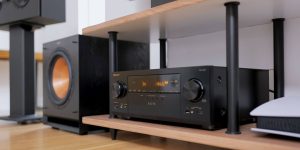
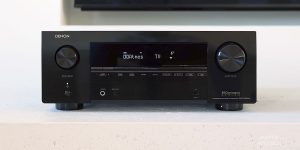
![Pioneer vs Denon Receivers [Top Models Compared and Tested]](https://thetechholics.com/wp-content/uploads/2023/10/denon-vs-pioneer-review-300x150.jpg)
